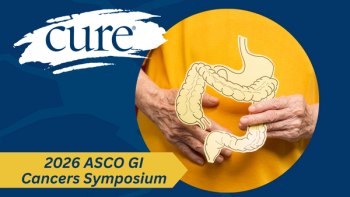
Can Neurofeedback Brain Training Ease Neuropathy?
Neurofeedback, a type of functional brain training, can be used to reduce chemotherapy-induced peripheral neuropathy in patients with cancer.
It is estimated that anywhere from 71 percent to 96 percent of patients experience chronic chemotherapy-induced peripheral neuropathy (CIPN) just one month after chemotherapy. Currently, all approved drugs for CIPN have known side effects. However, there is the option of neurofeedback, a type of functional brain training, to reduce CIPN in cancer survivors.
Researchers at University of Texas MD Anderson Cancer Center conducted a pilot study to determine the benefits of neurofeedback in cancer survivors. Published in Cancer, this study is the largest to date of its kind.
Sarah Prinsloo, M.D., lead investigator of the study, stated, “There is currently only one approved medication to treat CIPN, and it has associated muscle aches and nausea. Neurofeedback has no known negative side effects, can be used in combination, with other treatments and is reasonably cost effective.”
Previous research by Prinsloo isolated the location of brain activity that contributes to the physical and emotional aspects of chronic pain. Neurofeedback operates by targeting those areas and teaching patients to understand pain signals differently.
Patients learn to retrain brain activity through electroencephalogram (EEG) neurofeedback. The EEG tracks and records brain wave patterns and displays that activity on a computer screen. The patients then receive visual and auditory rewards when successful targeted adjustments are made to those brain wave patterns.
The randomized, controlled study evaluated 71 MD Anderson patients of all cancer types who had been finished with chemotherapy treatment for at least three months. All the patients reported higher than a 3 on the National Cancer Institute neuropathy rating scale. The severity of the pain and its impact on daily functioning was measured by the Brief Pain Index (BPI). The worst-pain item of the BPI was the primary outcome of the study.
The patients in the treatment group attended 20 sessions of a computer game which trained them to modify brain wave activity in the targeted areas. Eventually, the patients learned to manipulate brain activity without the reward. The control group was given the neurofeedback intervention after the completion of the study.
After the interventions, patients repeated the EEG and pain assessment to determine any differences in pain perception, cancer-related symptoms, quality of life and brain wave activity in the targeted areas. At the beginning of the study, there were no significant differences in CIPN symptoms.
However, by the end of the study, the patients in the neurofeedback group had significantly reduced BPI scores for worst pain, activity interference, numbness, tingling and unpleasantness, compared to the scores of the control group.
Prinsloo, an assistant professor of palliative, rehabilitation and integrative medicine said, “We observed clinically and statistically significant reductions in peripheral neuropathy following neurofeedback techniques. This research suggests that neurofeedback may be a valuable approach to reduce neuropathy symptoms and their impact on daily activities.”
The lack of adverse events associated with neurofeedback present it as an important option for patients with cancer, especially those with existing comorbidities. The researchers recommend further studies that include a broader participation base beyond women with breast cancer.




